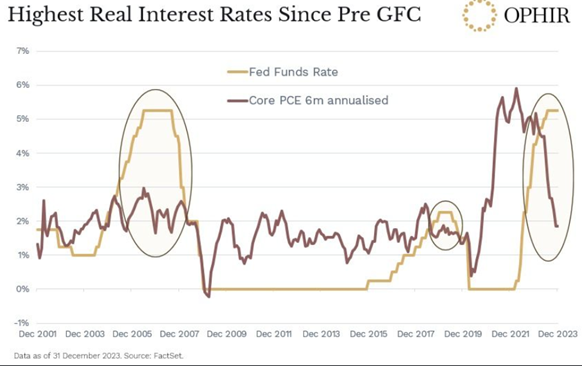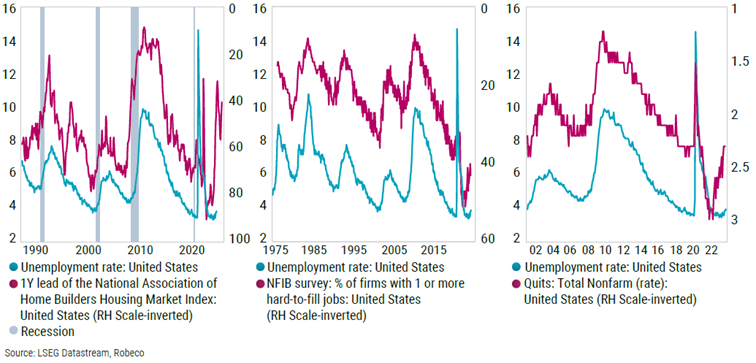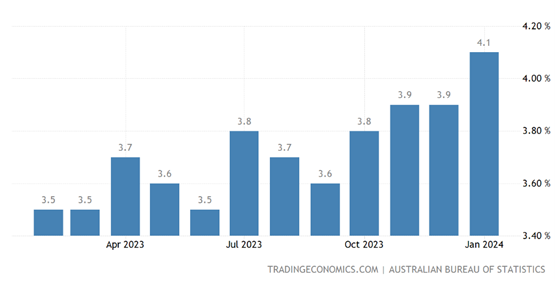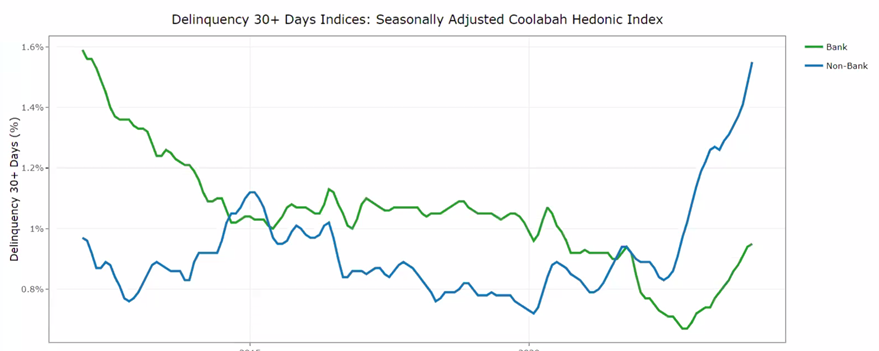Back in 2022, the majority of economists, myself included, were predicting a Eurozone and US recession within the next 12 months. Why the confidence in the recession? History indicated that a US recession occurred 100% of the time, within one year, whenever inflation rose above 5% and unemployment fell below 5% on a quarterly basis.
Some countries within the Eurozone block did fall into recession, the UK officially entering one just last week, however, the US has defied economic history and has been surprisingly resilient, maintaining record low levels of unemployment and persistent disinflation, all at the time of the steepest monetary policy tightening cycle in the past four decades. This has launched a new economic phrase, the ‘Immaculate Disinflation’.
Markets love a thematic, it’s a story line that can be wheeled out and it often helps drive market momentum. The overriding narrative at the moment is that both the US Federal Reserve (Fed) and the European Central Bank (ECB) are going to manage a soft landing. That unique and rare economic outcome of raising interest rates just enough to stamp out inflation at the same time as avoiding an economic recession. The Goldilocks outcome.
Will we get the fairy-tale ending that the markets are hoping for? Only time will tell. The difficulty we face is that we don’t have the script so we can’t skip ahead to the end to see the finale.
The following information is focussed on US economic data. We need to consider this data as the US equity and bond markets still have a major influence on where our own markets head.
The inflation outlook
Inflation has certainly been falling as evidenced by the chart below from Ophir Asset Management and this has resulted in high real interest rates which has the potential to dramatically slow economic growth.

Based off the back of this fall in inflation, markets have forecast that we have seen the peak in interest rates and that the Fed will be cutting interest rates rather dramatically this year with the first rate cut expected in March.
Personally, I hold a slightly different view. While inflation has fallen, I think it gets much harder from here to maintain the pace of disinflation. The price of goods has been consistently falling, however, services inflation has actually risen and currently sits at 6.5%. Given the services sector is such a large part of the US economy, we would need to see services inflation turn down sharply for the Goldilocks thematic to play out.
Given the strength in the services inflation, the Fed is likely to hold off interest rate cuts until later this year. If this is true, then we can expect some short-term volatility in both equity and bond markets as this needs to be priced in.
Dual Mandate
Similar to our own Reserve Bank of Australia (RBA), the Fed has a dual operating mandate, its primary objective is to achieve maximum employment while keeping prices stable. At times, these objectives can be diametrically opposed to each other. High inflation traditionally means you need to lift rates and that normally means higher unemployment.
To date, the Fed has managed to reduce inflation while keeping unemployment at record low levels but it’s much harder to get inflation to fall below 3% without having an impact on unemployment. History tells us that bringing inflation down by 0.25% typically requires a 1% rise in unemployment on an annual basis.
The following charts from Robeco indicate that we may be about to see a rise in US unemployment.

Australia
We are in a somewhat similar position to the US, we have likely seen the peak in interest rates though I don’t think we will see a rate cut until the end of this year as the RBA has not been as aggressive in lifting rates as the likes of the US.
These higher interest rates have seen our inflation rate fall and we have witnessed a slowdown in our economic growth. We are yet to see any dramatic lift in unemployment, though as the following chart shows, it is slowly increasing.

The unemployment rate is a critical economic indicator that we watch closely and while it is a lagging indicator, the change in trend and the pace of change can highlight future difficulties ahead. An unemployment rate of 4% indicates a return to normal so it does not cause us concerns at the moment.
The following chart from Coolabah Capital Investors does however provide us with some concern. It highlights loan delinquencies on both prime and sub prime loans from banks and non-banking institutions. Delinquencies for banks have increased but they are just returning to normal levels. At this stage, we don’t foresee any issues for the banks but we do expect the increased doubtful debt allowances they will need to make will start to impact their profit margins.

We do however have some concerns about the non-bank lending. Delinquencies have risen dramatically and while these are not yet defaults, they indicate a rise in at risk loans. In recent years there has been an explosion of non-bank lending as the banks withdrew from some forms of lending, typically to sectors in the property development and commercial market segments.
Over the last 18 months, we have deliberately avoided investing in private lending (credit) as it’s unlisted, illiquid and we believe that the returns have not adequately compensated for the risk being taken. It is not fair to lump all private credit managers in the same bucket, however there is the potential for contagion risk as we saw recently with the US regional banks.
We have started to hear of situations that are termed ‘pretend and extend’ whereby lenders will extend the loan periods for borrowers who can’t afford say a 3-year loan to a 10-year loan which they can afford. This allows the lender to avoid declaring loan defaults but leaves them holding loans that would be worth significantly less if they operated in a liquid listed market.
For the last two years we have believed that Australia would avoid a recession, and we believe that the next 12 to 18 months will be critical in determining whether this will hold true. While it looks like the amended stage 3 tax cuts will pass through Parliament and will provide some stimulus, it’s harder to see the federal and state governments providing any meaningful stimulus. This then leaves it up to the RBA to provide any needed stimulus by cutting rates and we think they will be slow to act.
In conclusion, central banks globally are in a difficult position and are hoping that they can engineer the soft landing. They know they need to cut interest rates to avoid a recession but inflation is proving to be stubborn.
I fear that services inflation will prove to be hard to tame and will end up giving Goldilocks a case of heartburn.
For more information contact us on 03 8610 6396.
Keep Wealth Partners Pty Ltd (AFSL 494858)
This information is of a general nature only and may not be relevant to your particular circumstances. The circumstances of each investor are different, and you should seek advice from a financial planner who can consider if the strategies and products are right for you.







